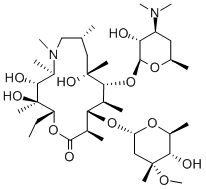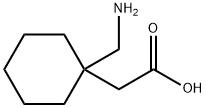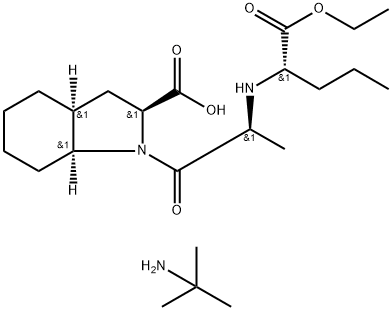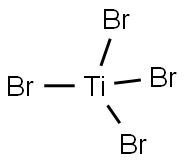DECAMETHONIUM BROMIDE
Synonym(s):Decamethylene bis(trimethylammonium bromide);Decane-1,10-bis(trimethylammonium bromide)
- CAS NO.:541-22-0
- Empirical Formula: C16H38Br2N2
- Molecular Weight: 418.29
- MDL number: MFCD00011779
- EINECS: 208-772-2
- SAFETY DATA SHEET (SDS)
- Update Date: 2024-12-18 14:08:57

What is DECAMETHONIUM BROMIDE?
Description
Decamethonium is a depolarizing neuromuscular blocking agent. It is a partial agonist of muscle-type nicotinic acetylcholine receptors (nAChRs). Decamethonium activates α1β1-containing adult mouse muscle-type nAChRs expressed in X. laevis oocytes with an EC50 value of 40 μM using voltage clamp electrophysiology. It is also a nondepolarizing antagonist of neuronal-type nAChRs, inhibiting mouse α7-, α3β2-, α3β4-, and α4β2-containing receptors with IC50 values of 7.4, 405, 28, and 59 μM, respectively. Decamethonoium is a competitive antagonist of α4β2-containing nAChRs expressed in SH-EP1 cells (IC50 = 52 μM for the human receptor). It also inhibits electric eel acetylcholinesterase (AChE) and blocks electrically-evoked tibialis muscle twitches in anesthetized cats with ED95 values of 35 and 70 μg/kg for cats under chloralose and ether anesthesia, respectively. Formulations containing decamethonium have been used to induce paralysis during anesthesia.
Chemical properties
crystalline solid
The Uses of DECAMETHONIUM BROMIDE
antipsychotic
What are the applications of Application
Decamethonium bromide is a nicotinic acetylcholine receptor partial agonist
brand name
Syncurine (GlaxoSmithKline).
Biological Functions
Decamethonium was one of the first neuromuscular blocking agents to be synthesized. An SAR study on a series of bis-quaternary ammonium compounds with varying numbers of methylene groups separating the nitrogen atoms demonstrated that maximal neuromuscular blockade occurred with 10 to 12 unsubstituted methylene groups. Activity diminished as the number of carbons was either decreased or increased. The compound with six methylene groups, hexamethonium, is a nicotinic antagonist at autonomic ganglia (ganglionic blocking agent). All the compounds in this series that possessed neuromuscular blocking activity also caused depolarization of the postjunctional membrane.
General Description
Crystals derived from methanol and acetone.
Air & Water Reactions
Water soluble.
Health Hazard
ACUTE/CHRONIC HAZARDS: When heated to decomposition DECAMETHONIUM BROMIDE emits very toxic fumes.
Fire Hazard
Flash point data for DECAMETHONIUM BROMIDE are not available. DECAMETHONIUM BROMIDE is probably combustible.
Properties of DECAMETHONIUM BROMIDE
| Melting point: | 263-267 °C(lit.) |
| storage temp. | Inert atmosphere,Room Temperature |
| solubility | DMF: 2 mg/ml; DMSO: 16 mg/ml; Ethanol: 33 mg/ml; PBS (pH 7.2): 5 mg/ml |
| form | crystalline |
| color | off-white |
| Water Solubility | almost transparency |
| λmax | λ: 240 nm Amax: 0.04 λ: 250 nm Amax: 0.03 λ: 260 nm Amax: 0.02 λ: 500 nm Amax: 0.02 |
| Merck | 14,2847 |
| BRN | 3728288 |
| Stability: | Stable. Incompatible with strong oxidizing agents. |
| CAS DataBase Reference | 541-22-0(CAS DataBase Reference) |
| EPA Substance Registry System | Decamethonium dibromide (541-22-0) |
Safety information for DECAMETHONIUM BROMIDE
| Signal word | Danger |
| Pictogram(s) |
 Skull and Crossbones Acute Toxicity GHS06 |
| GHS Hazard Statements |
H301:Acute toxicity,oral H315:Skin corrosion/irritation H319:Serious eye damage/eye irritation H335:Specific target organ toxicity, single exposure;Respiratory tract irritation |
| Precautionary Statement Codes |
P261:Avoid breathing dust/fume/gas/mist/vapours/spray. P301+P310:IF SWALLOWED: Immediately call a POISON CENTER or doctor/physician. P305+P351+P338:IF IN EYES: Rinse cautiously with water for several minutes. Remove contact lenses, if present and easy to do. Continuerinsing. |
Computed Descriptors for DECAMETHONIUM BROMIDE
New Products
(S)-3-Aminobutanenitrile hydrochloride 4-Methylphenylacetic acid N-Boc-D-alaninol N-BOC-D/L-ALANINOL Tert-butyl bis(2-chloroethyl)carbamate 3-Morpholino-1-(4-nitrophenyl)-5,6-dihydropyridin- 2(1H)-one Furan-2,5-Dicarboxylic Acid Tropic acid 1-Bromo-3,5-Di-Tert-Butylbenzene S-2-CHLORO PROPIONIC ACID ETHYL ISOCYANOACETATE 2-Bromo-1,3-Bis(Dimethylamino)Trimethinium Hexafluorophosphate 4-IODO BENZOIC ACID 3-NITRO-2-METHYL ANILINE 1-(2,4-DICHLOROPHENYL) ETHANAMINE (2-Hydroxyphenyl)acetonitrile 4-Bromopyrazole 2-(Cyanocyclohexyl)acetic acid 4-methoxy-3,5-dinitropyridine 1-(4-(aminomethyl)benzyl)urea hydrochloride 2-aminopropyl benzoate hydrochloride diethyl 2-(2-((tertbutoxycarbonyl)amino) ethyl)malonate tert-butyl 4- (ureidomethyl)benzylcarbamate Ethyl-2-chloro((4-methoxyphenyl)hydrazono)acetateRelated products of tetrahydrofuran








You may like
-
 Decamethonium Bromide CAS 541-22-0View Details
Decamethonium Bromide CAS 541-22-0View Details
541-22-0 -
 Decamethonium bromide 95% CAS 541-22-0View Details
Decamethonium bromide 95% CAS 541-22-0View Details
541-22-0 -
 Decamethonium bromide CAS 541-22-0View Details
Decamethonium bromide CAS 541-22-0View Details
541-22-0 -
 1975-50-4 98%View Details
1975-50-4 98%View Details
1975-50-4 -
 2-HYDROXY BENZYL ALCOHOL 98%View Details
2-HYDROXY BENZYL ALCOHOL 98%View Details
90-01-7 -
 2-Chloro-1,3-Bis(Dimethylamino)Trimethinium Hexafluorophosphate 221615-75-4 98%View Details
2-Chloro-1,3-Bis(Dimethylamino)Trimethinium Hexafluorophosphate 221615-75-4 98%View Details
221615-75-4 -
 14714-50-2 (2-Hydroxyphenyl)acetonitrile 98+View Details
14714-50-2 (2-Hydroxyphenyl)acetonitrile 98+View Details
14714-50-2 -
 118753-70-1 98+View Details
118753-70-1 98+View Details
118753-70-1